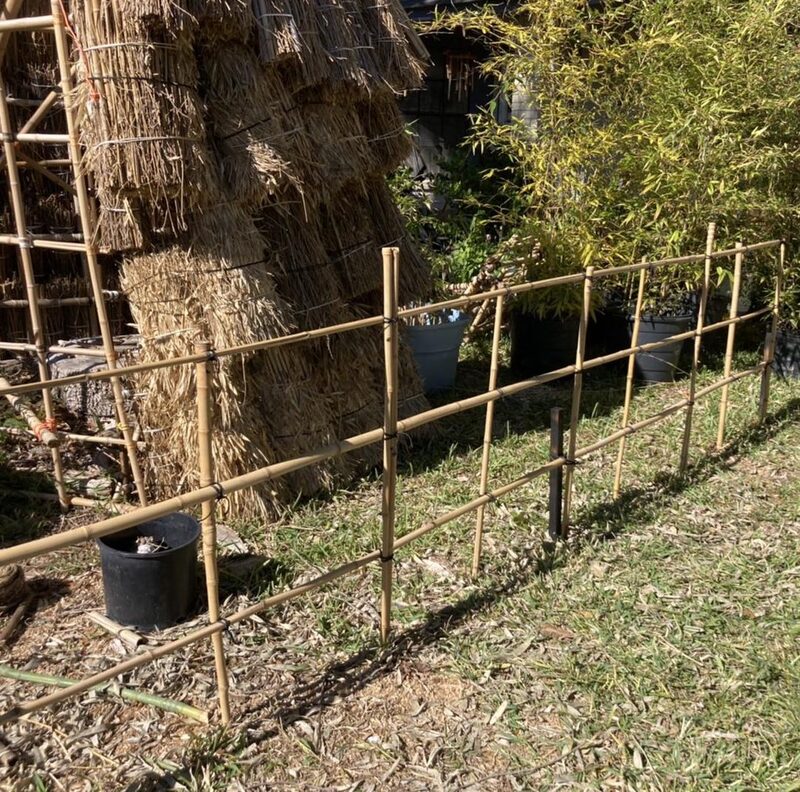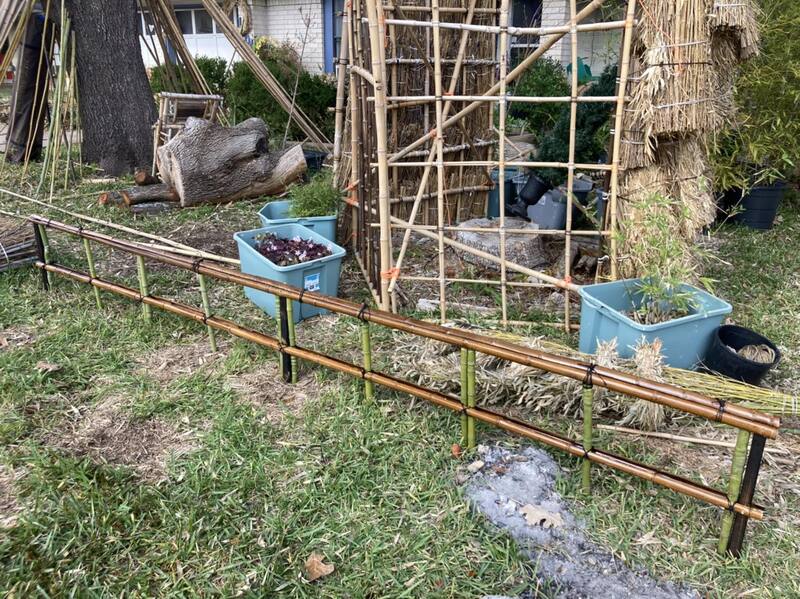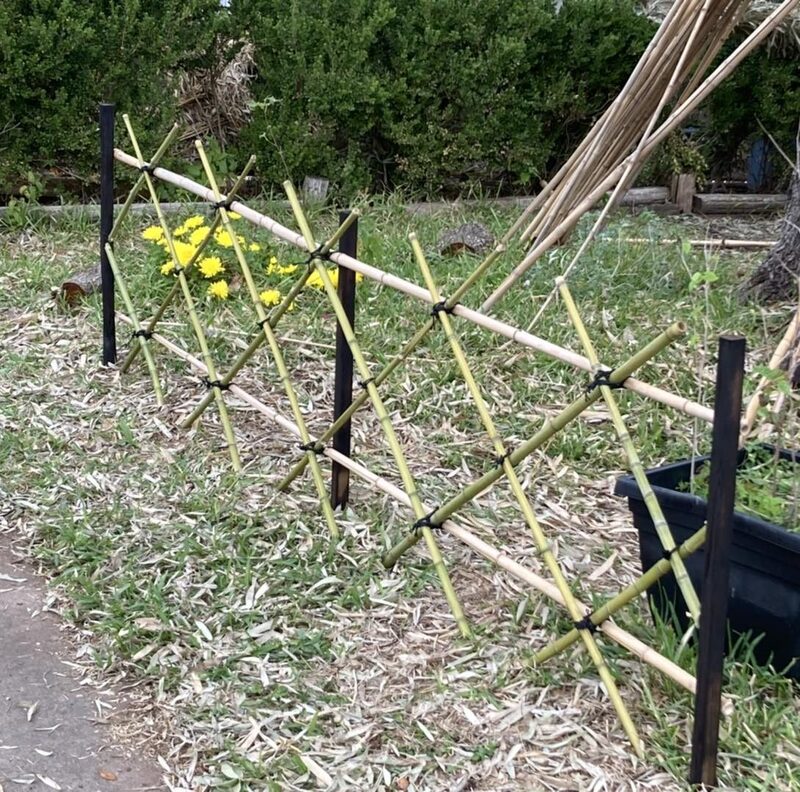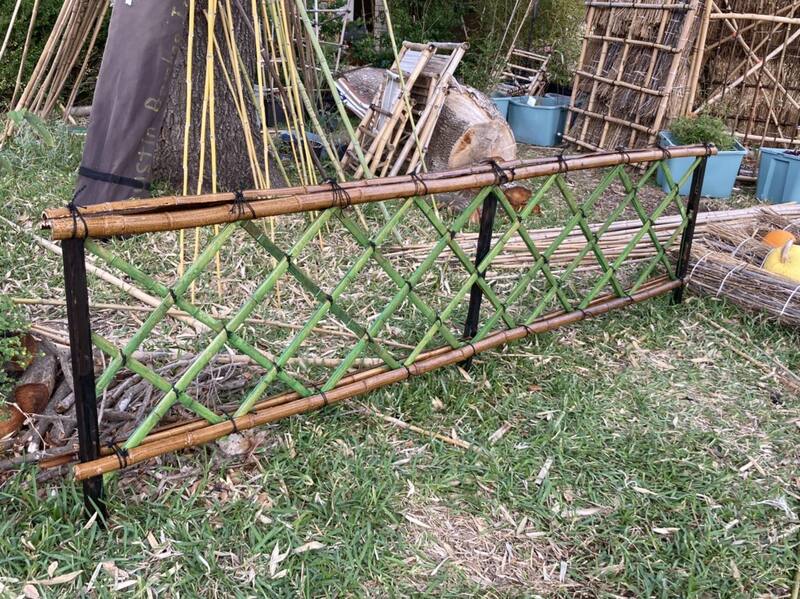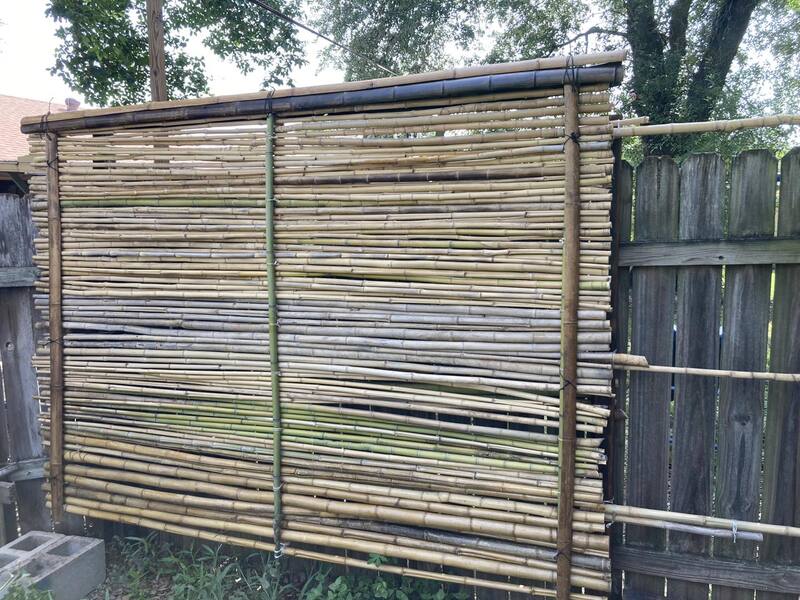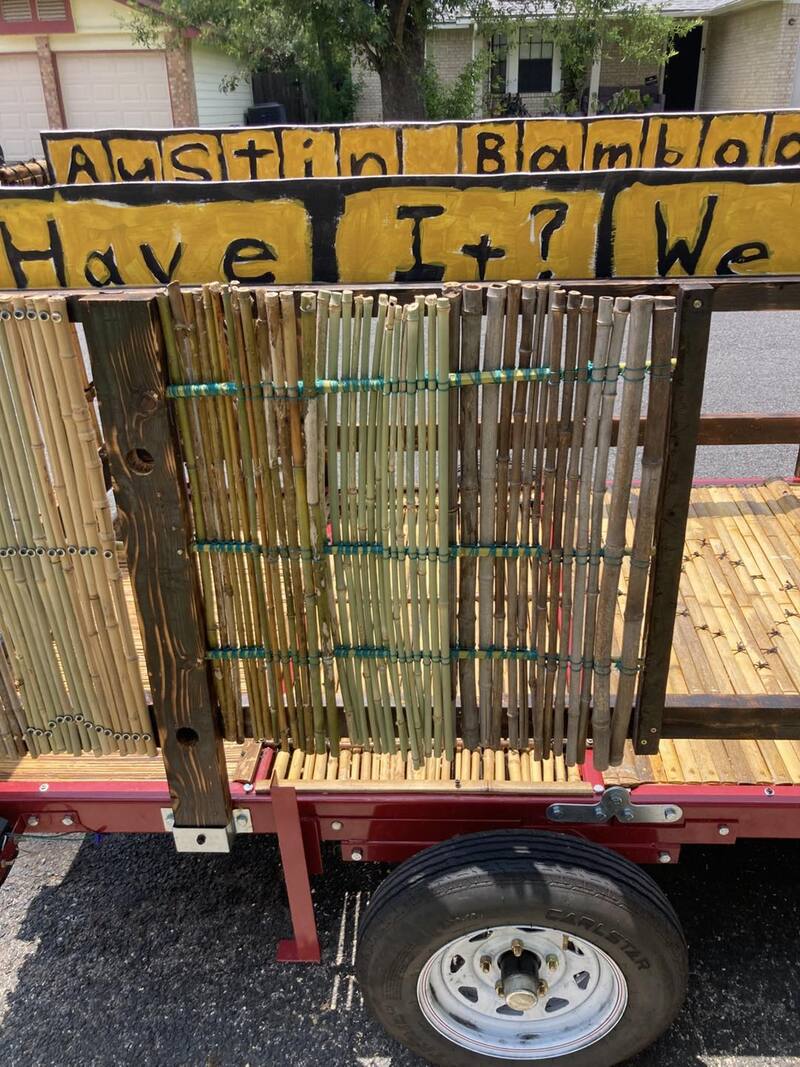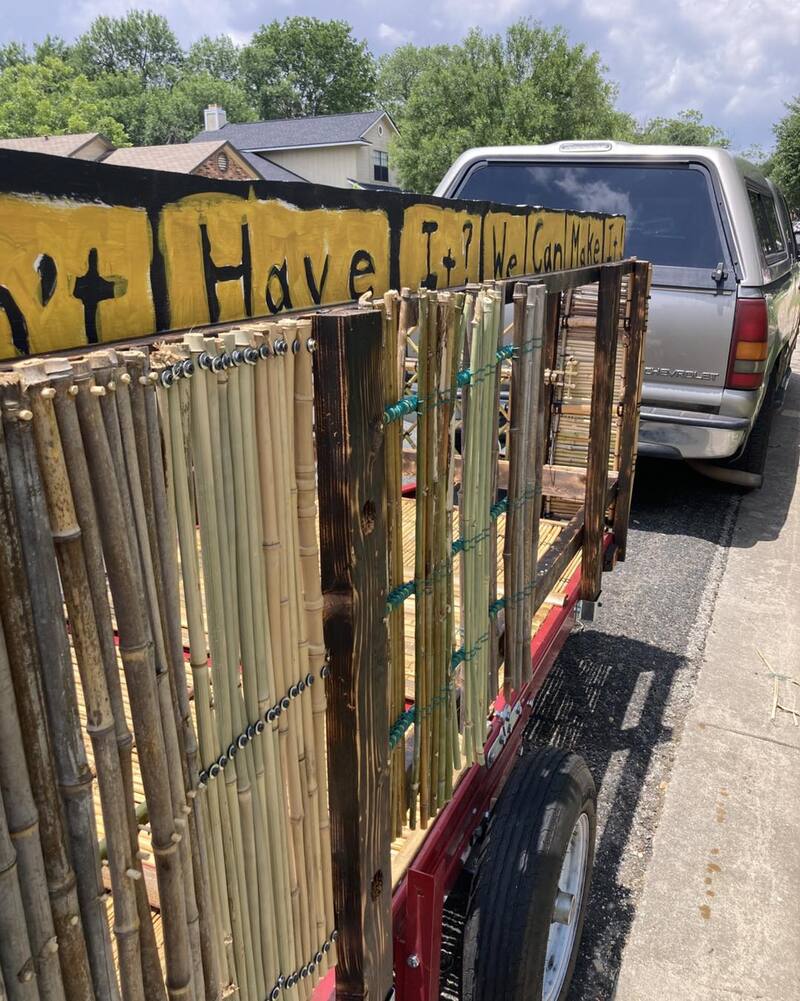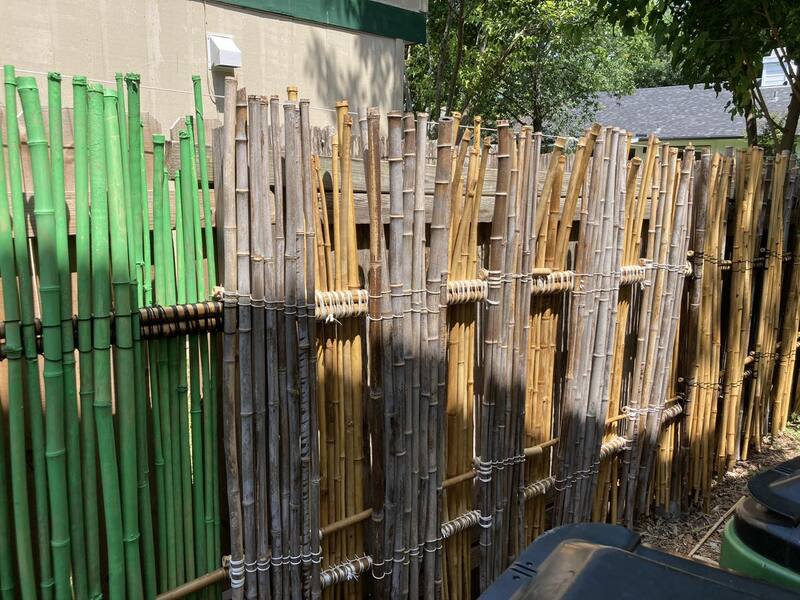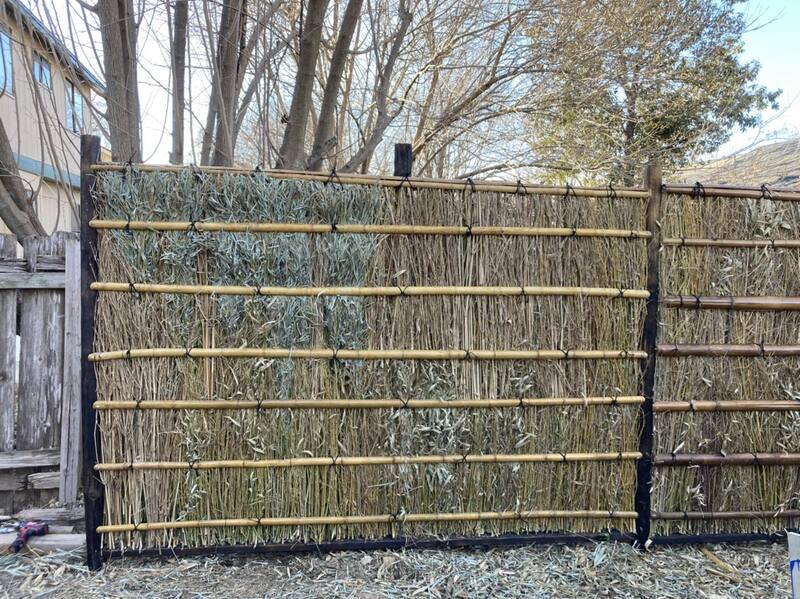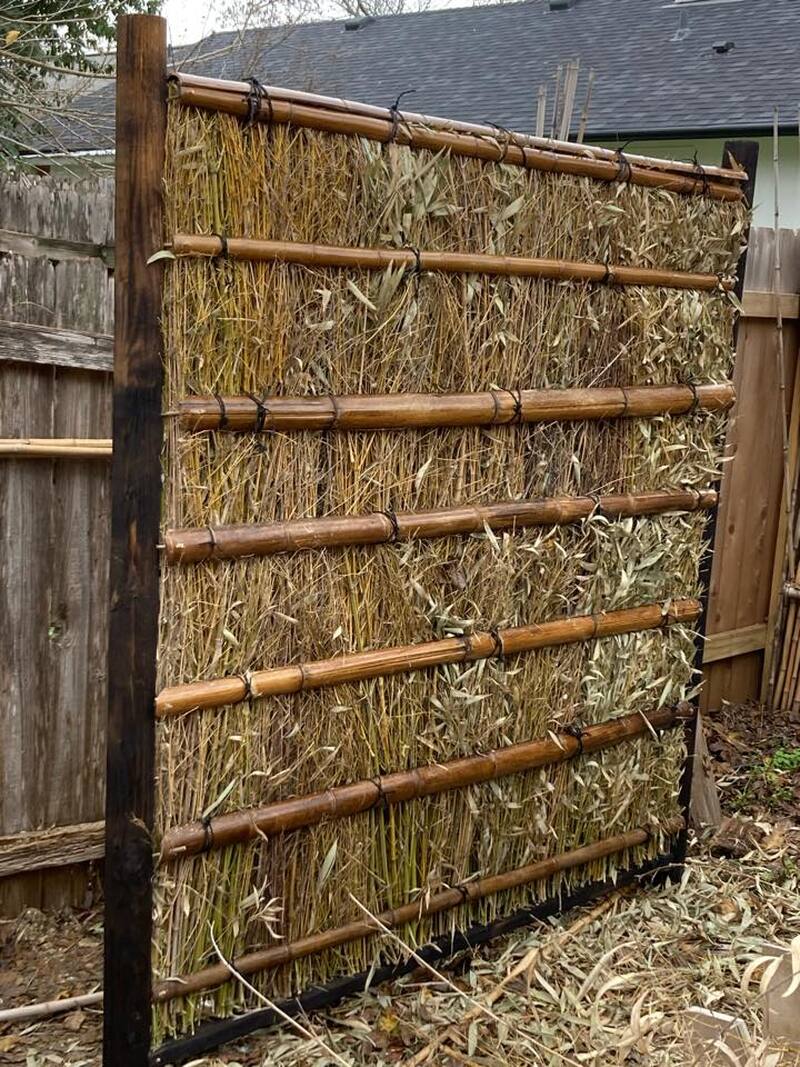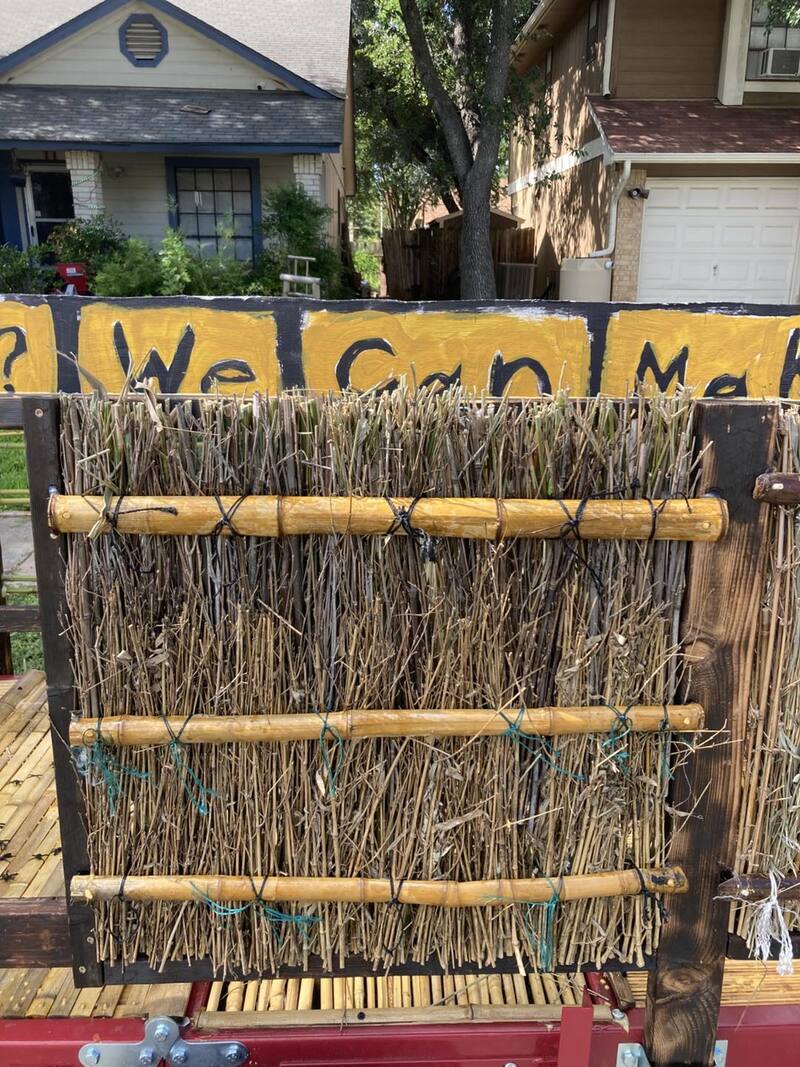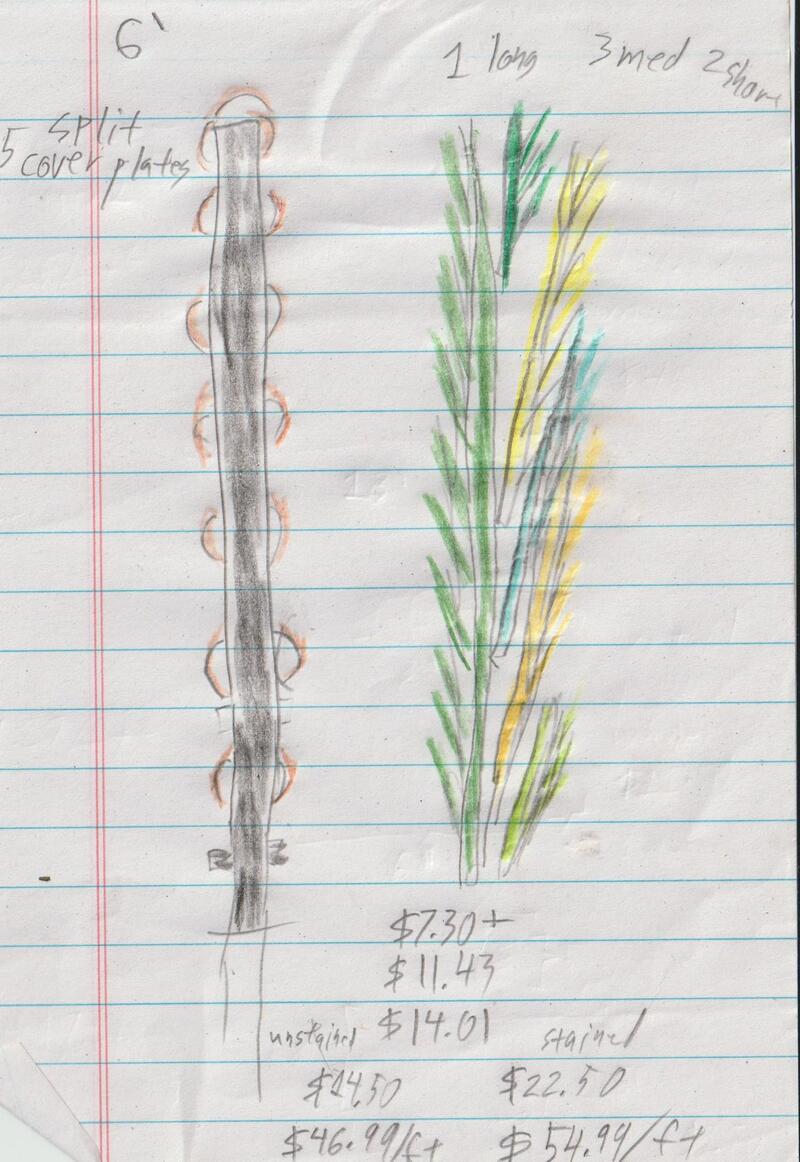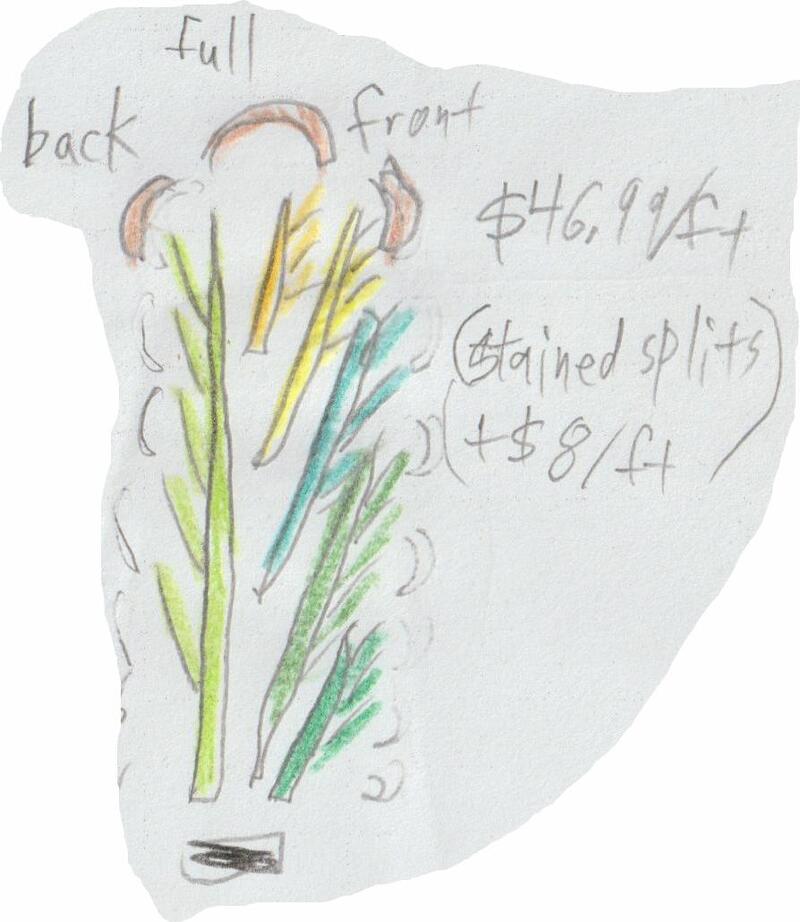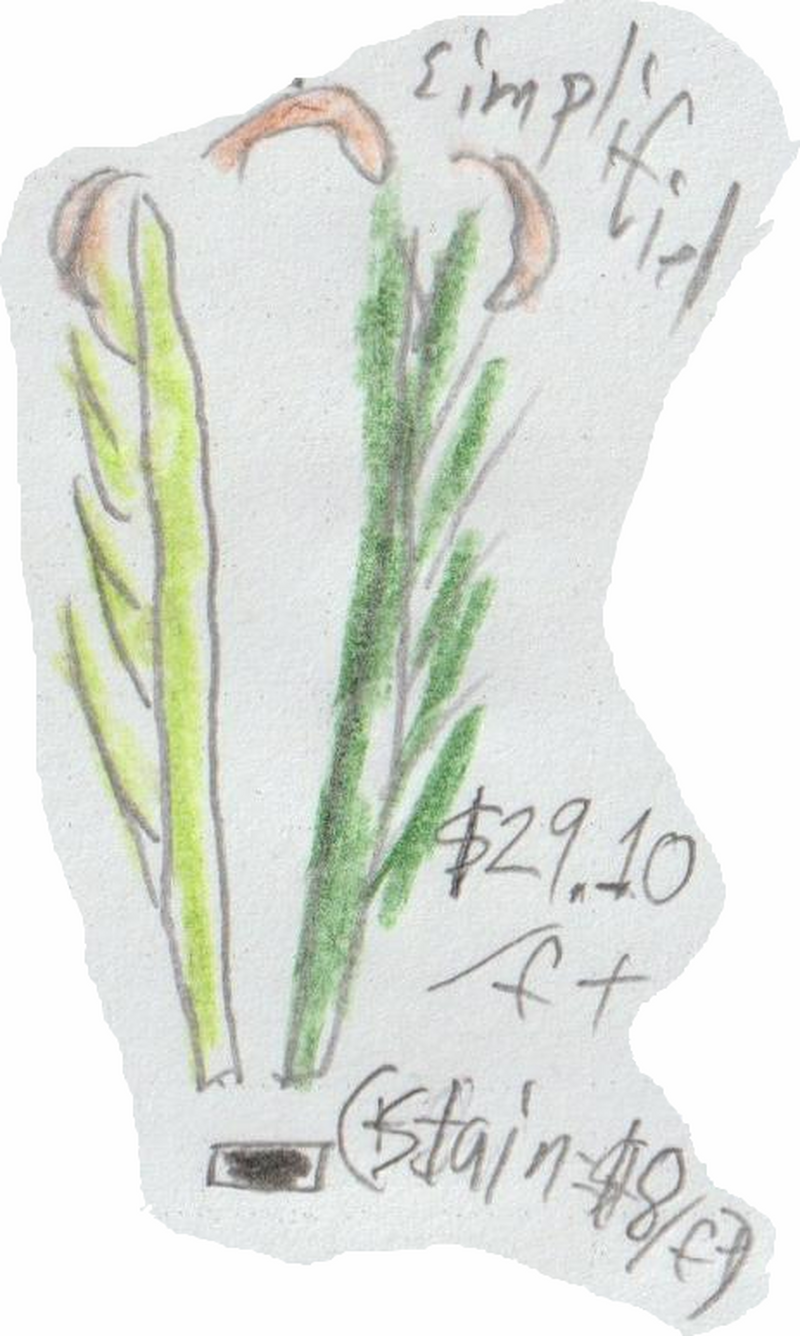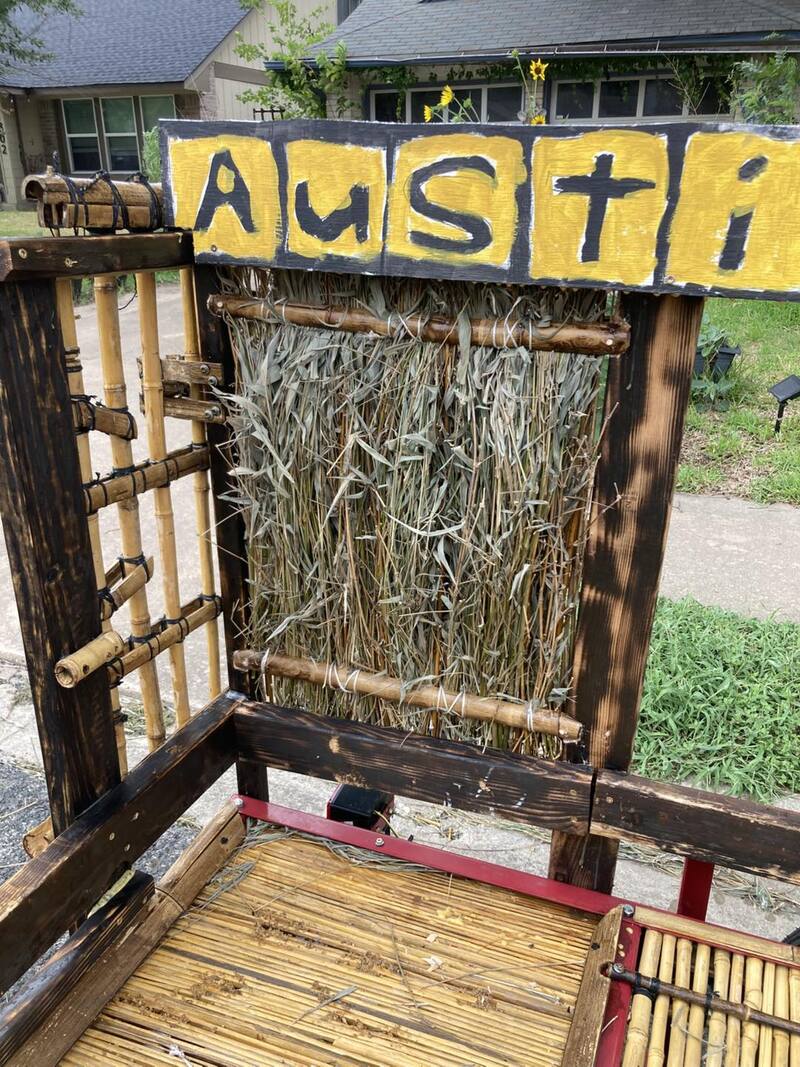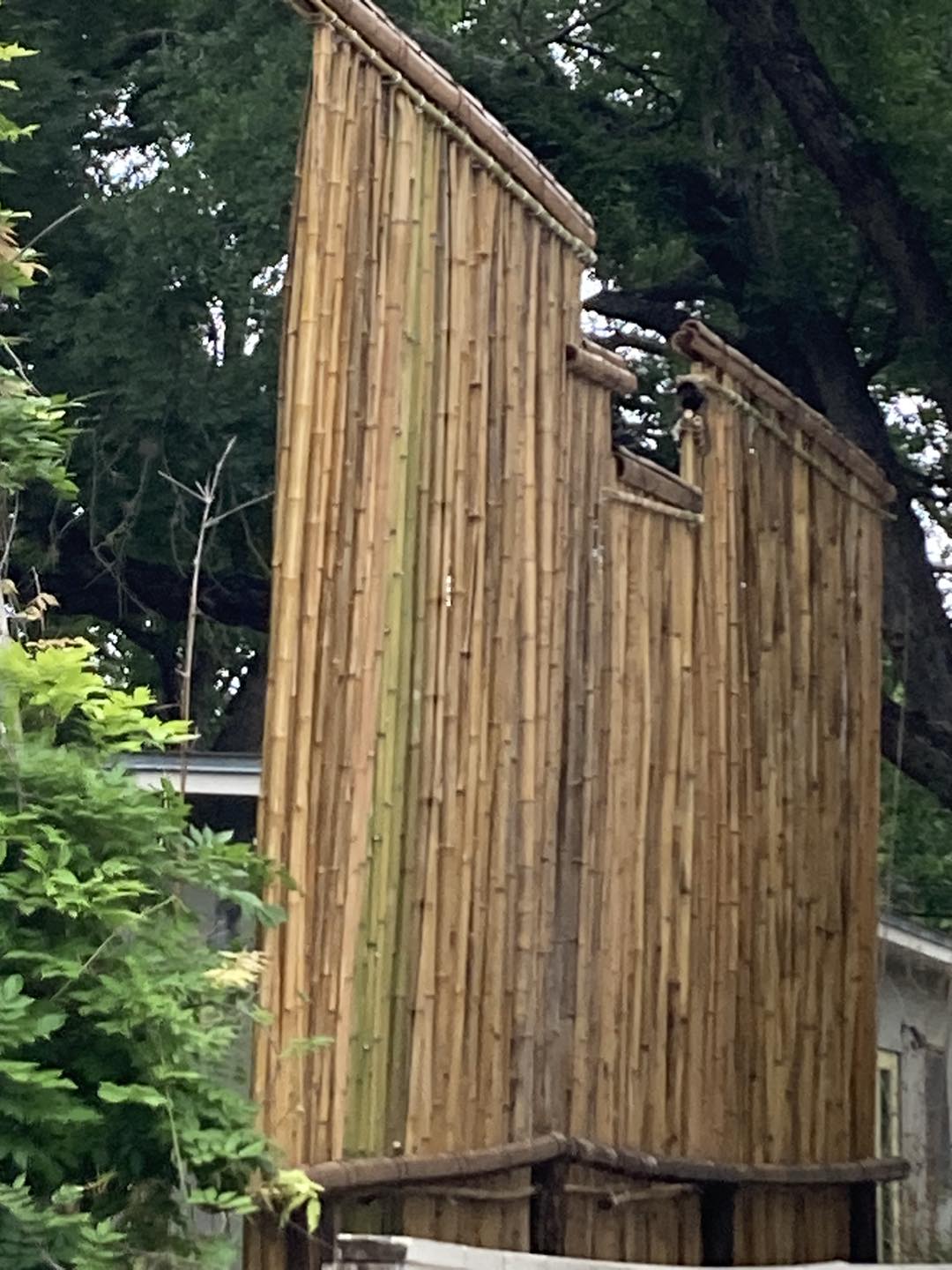
The Historical Significance of Bamboo Fences:
The Historical Significance of Bamboo Fences:
Bamboo fences have a rich history in Japanese culture, often symbolizing simplicity and connection to nature. They were traditionally used to enclose gardens and temples, reflecting the Zen principles of tranquility and balance. This historical significance continues to resonate today, making bamboo fences a meaningful addition to your outdoor space. By incorporating these designs, you not only enhance your landscape but also honor a cultural practice that celebrates nature's beauty.
Understanding the Art of Japanese Bamboo Fences
Japanese bamboo fences are not merely functional; they are a form of art. Traditionally used in Japanese gardens, these fences are designed with a deep appreciation for nature and harmony. The Yotsume Gaki style, characterized by its square openings, creates a lattice work that allows glimpses of the beautiful landscapes beyond, while the Misu Gaki features a more solid structure that provides privacy without sacrificing beauty. Each style tells a story while serving its purpose as a boundary.
Choosing the Right Bamboo Fence for Your Garden
When selecting a bamboo fence for your garden, consider the overall aesthetic you wish to achieve. The versatility of bamboo allows for various applications, whether you are looking to create a serene meditation space or simply define your garden boundaries. Understanding the history and purpose of different styles can help you choose a design that complements your property. Our expert team is ready to assist you in making an informed decision that aligns with your vision.
Explore Our Japanese Fence Designs Gallery
View a curated collection of stunning Japanese fence designs. Each image showcases unique styles, materials, and techniques, perfect for inspiring your own garden project. Discover the beauty and functionality of Japanese bamboo fences and how they can integrate with natural landscaping.
Yotsume Gaki四つ目垣Four eyed/Square division fence |
Kinkakuji Gaki金閣寺垣Fence style popularized by theKinkaku (gold support) temple |
Yarai Gaki遣らい垣/矢来垣Stockade Fence |
Ryou An Ji Gaki龍安寺垣Fence style popularized by the Ryou An (dragon relaxation) temple |
|
With charred support poles as options to reinforce the ends and midpoints for longer fences, these squared division bamboo fences use relatively few bamboo poles and don't take that much labor to assemble. This makes them one the least expensive option for sculpting your landscape and discouraging animals that are larger than the openings. |
Similar to the Yotsu-me fence in it's straight and open look, the Kinkaku-ji fence has splits from thicker bamboo poles mounted to the charred support post as horizontal covers to protect the vertical bamboo poles and give it a more refined look. |
The stockade fence has diagonal poles or splits mounted on horizontal supports anchored on vertical posts which traditionally are wood that has been charred to preserve them. |
Basically a stockade fence made from thin bamboo splits, planed on the back and sides, and paired back to back. Thick curved splits are mounted on charred wood posts as cover pieces for a more welcoming look. |
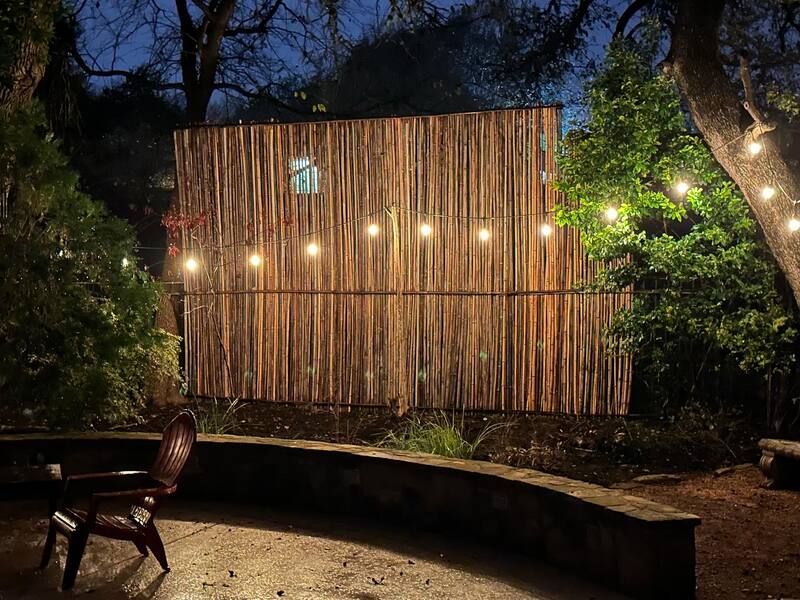
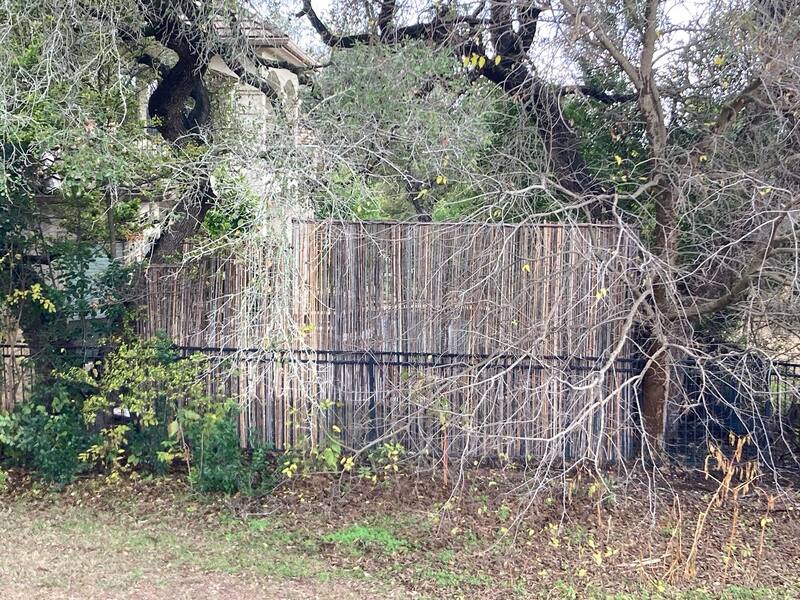
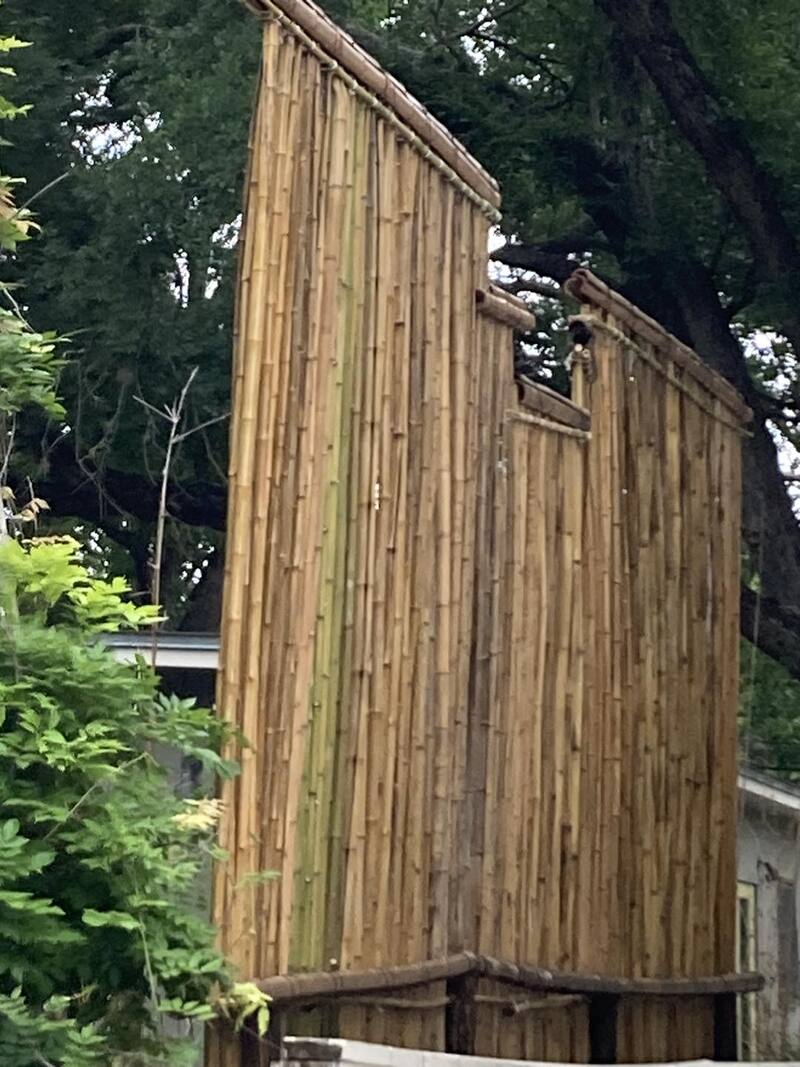
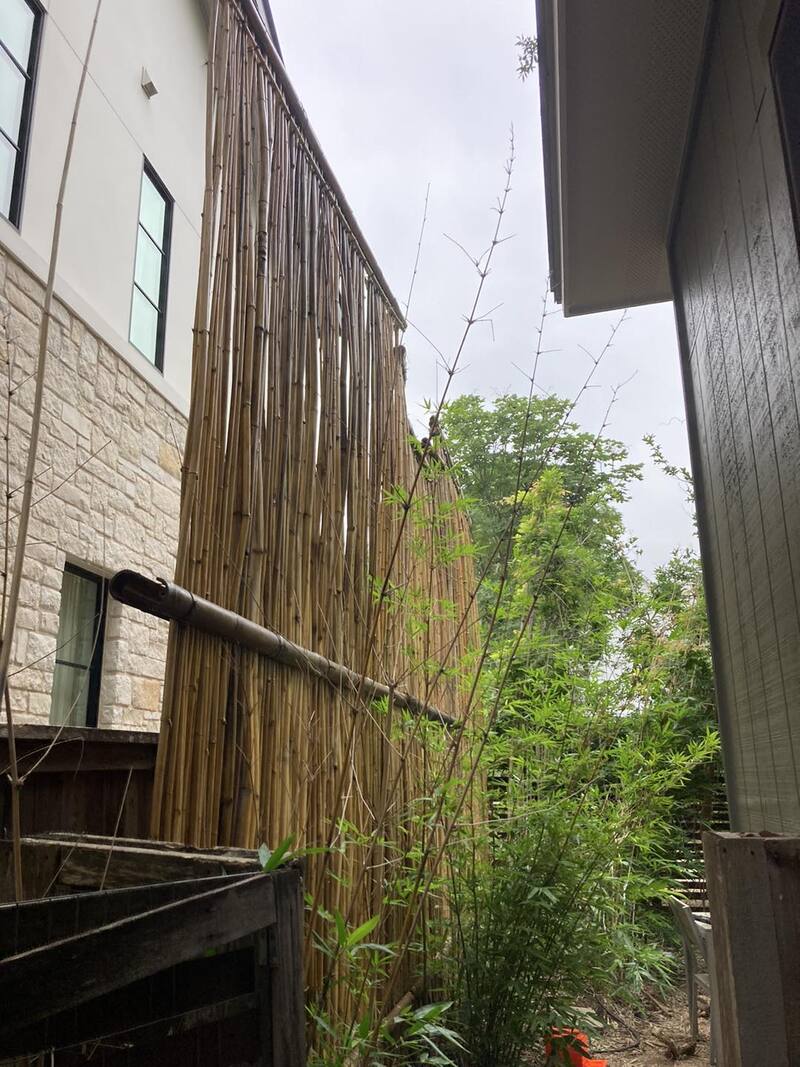
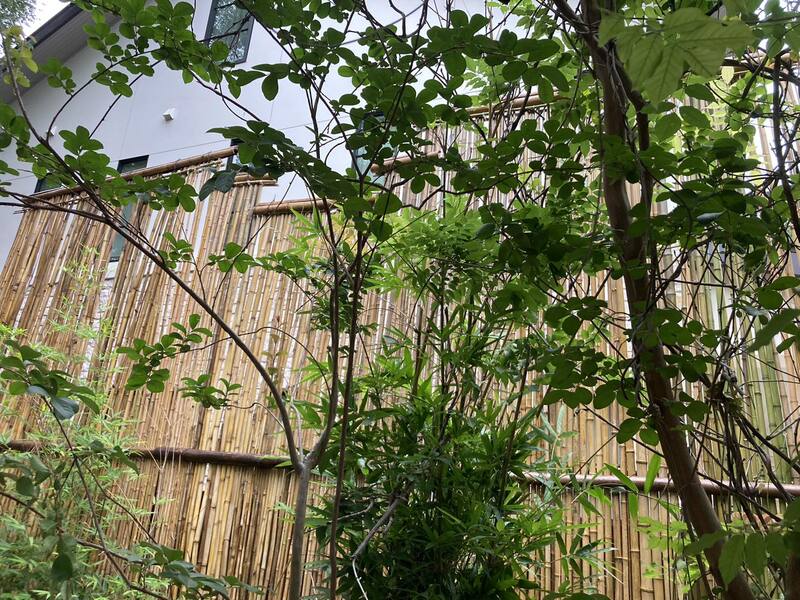
Shimizu Gaki 清水垣 Clear Water Fence :
named after the region of Japan in which it developed.
Shimizu Gaki 清水垣 Clear Water Fence :
named after the region of Japan in which it developed.
For simplified version, verticals are sandwiched between front and back horizontals mounted to charred/stained posts, or existing structure. Posts and anchoring are extra.
Pricing for filler poles is $1.50/Ft2 for untreated bamboo, double for lightly heat treated bamboo, and triple for stained bamboo. Additional horizontals can be added for $1/linear foot.
Labor for sandwiching runs $16.25/linear foot for three horizontals. Each additional horizontal adds $7/ foot.
Stained or unstained cover-plates can be added to protect the tied connections and keep rain out for $1.50 per foot per cover-plate.
MiSu Gaki 御簾垣 Attendants Blind Fence:
Security & obscurity
MiSu Gaki 御簾垣 Attendants Blind Fence:
Security & obscurity
Intended to resemble the roll up blinds some nobles used to protect their identities from new contractors and prevent assassinations, these sacrifice the convenience of a drawstring for the stability of a more permanent structure.
Pricing is the same as a similar Shimizu Gaki.
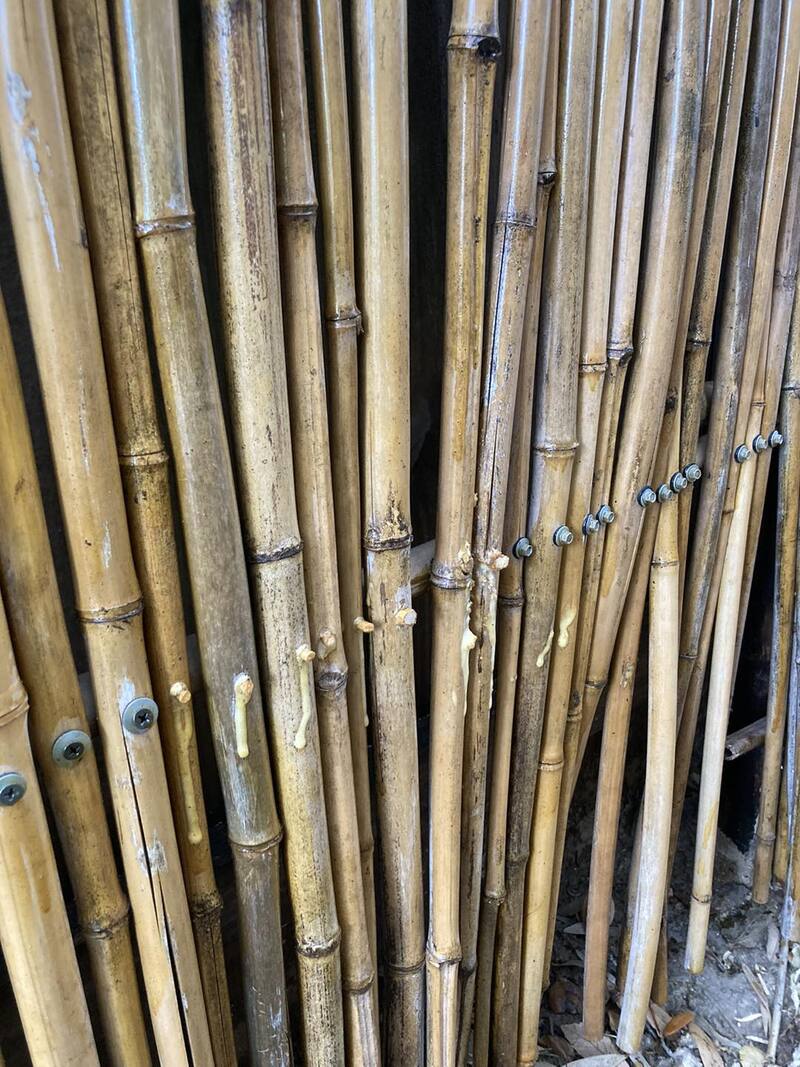
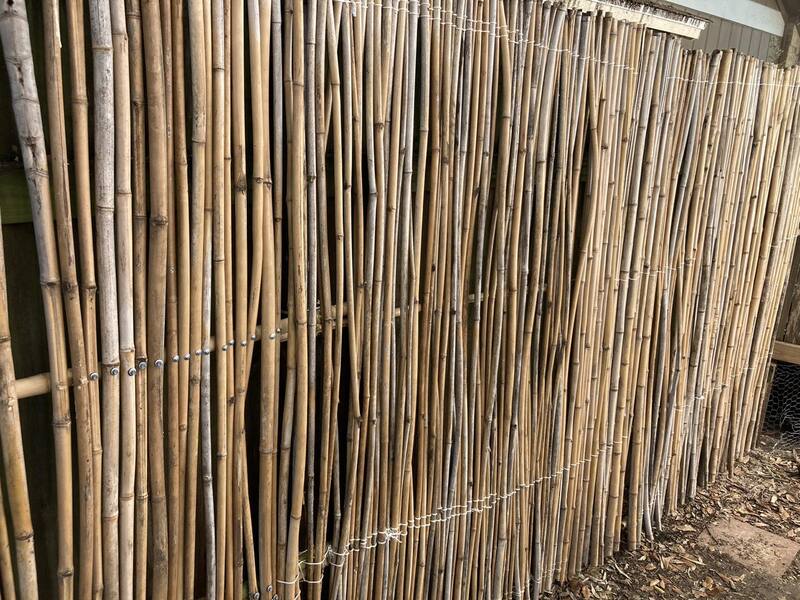

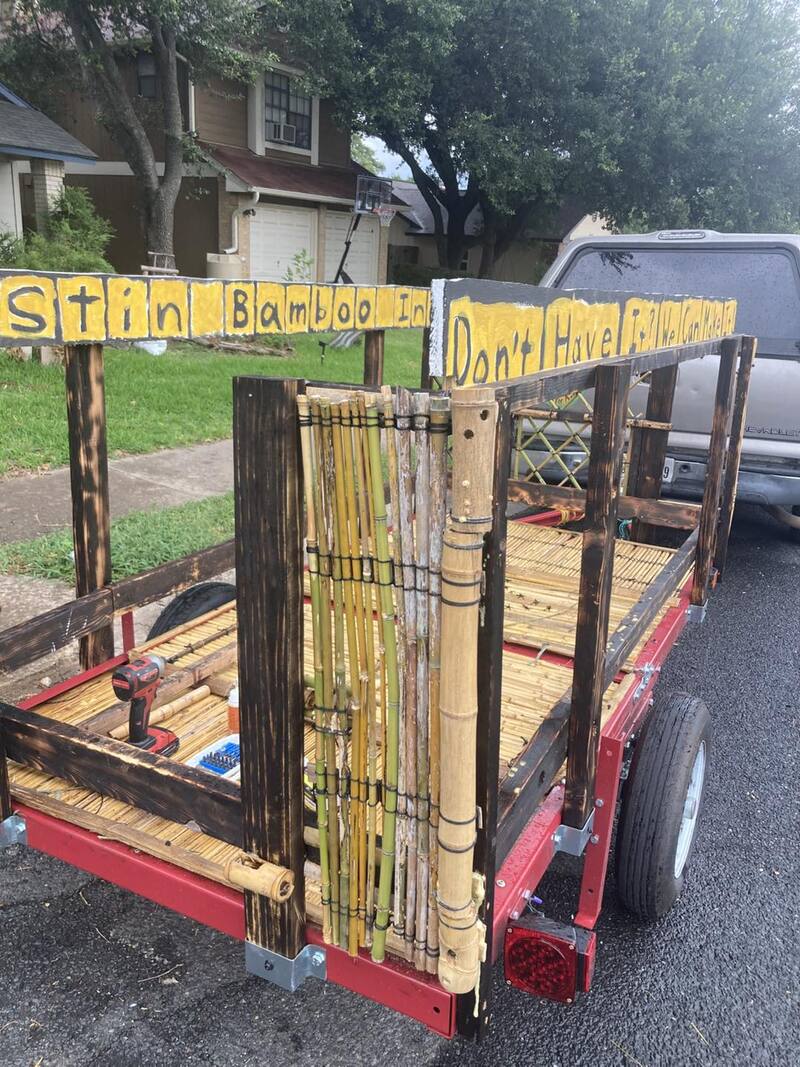
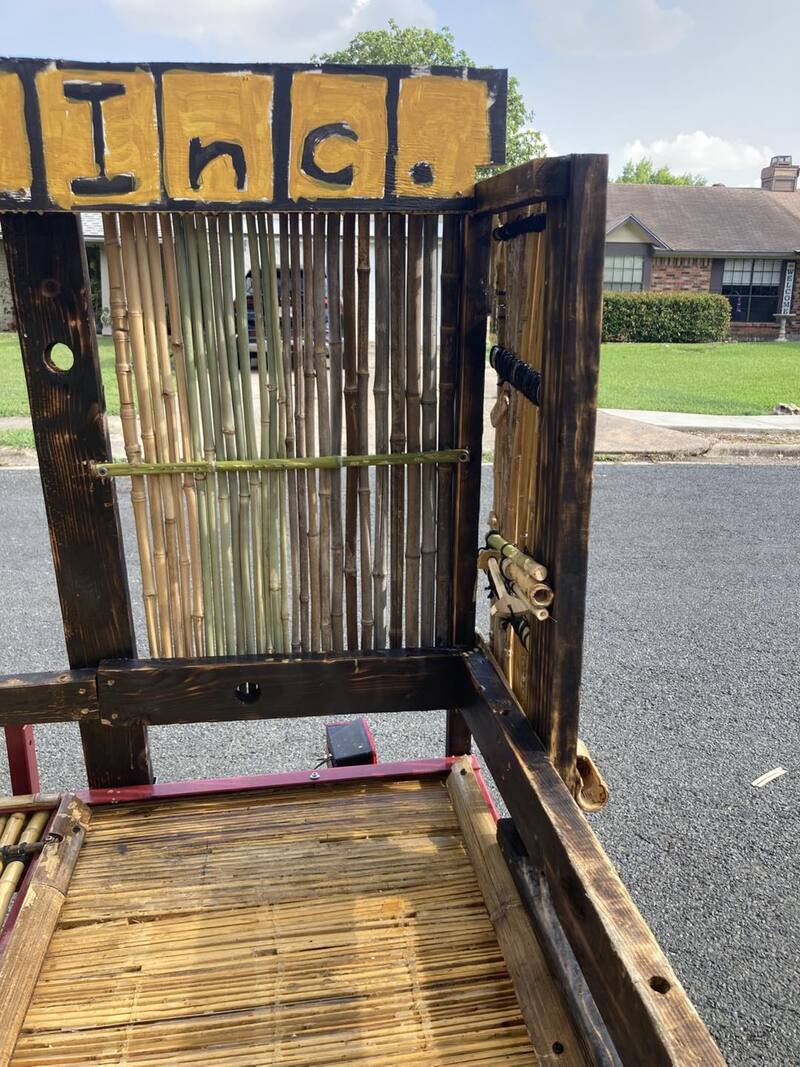
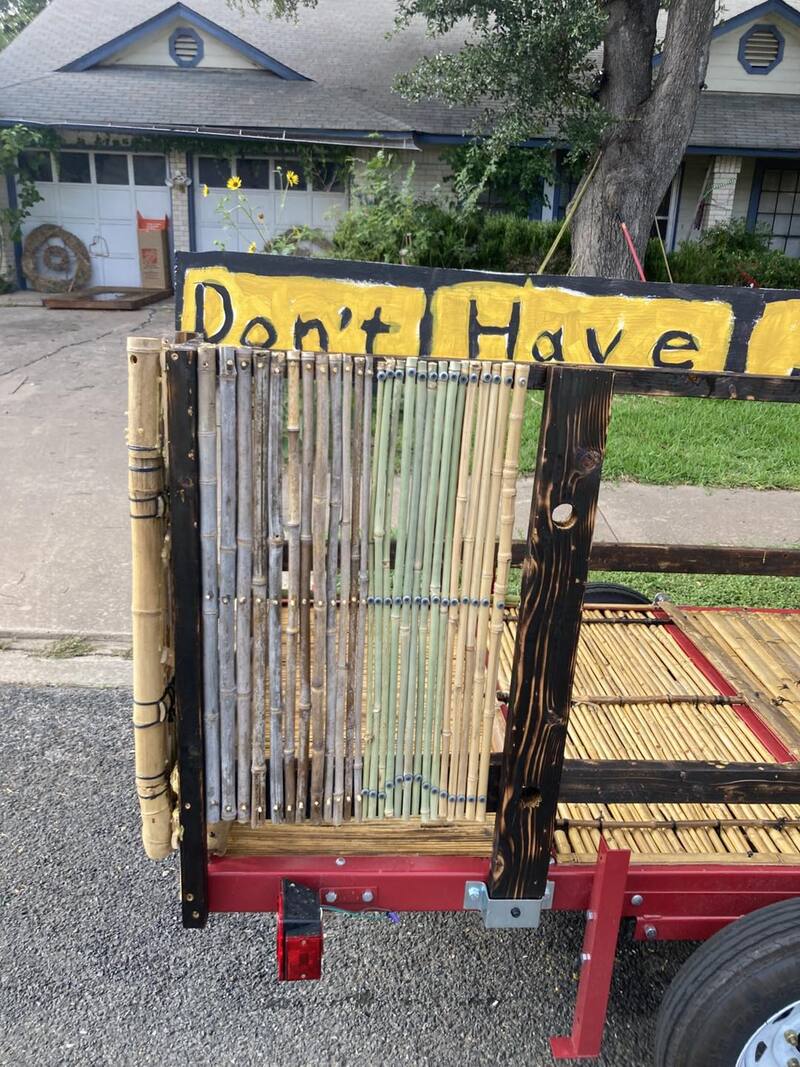
Tokusa Gaki 木賊垣 Dutch Reed/Rush Fence Version 1 & 2:
Tokusa Gaki 木賊垣 Dutch Reed/Rush Fence Version 1 & 2:
Version 1 - Lashed:
Developed in Dutch colonies in Japan, most likely as busywork to keep idle hands out of trouble, these have visible intricate lashing or more subtle but no less intricate pegs (or wide headed/washered screws), these became popular among nobles and aristocrats to show off their wealth.
Filler pole costs are the same as for Shimizu style.
The lashed versions will run $65/foot for up to 3 horizontal supports, and $35/foot for each additional horizontal. Tight lashes on old bamboo will be the sturdiest option that can take the most abuse.
Version 2 - Pegged/Screwed:
The more subtle or elegant look of the pegged/screwed poles appeals to certain customers, despite the reduced durability.
Those with custom fit pegs glued in will run $15/foot with 3 supports. Those with appropriate sized screws (broad heads or bonded washers in predrilled holes to minimize splitting) will run $35/foot for those three supports.
Teppo Gaki 鉄砲垣 Rifle Barrel Fence:
Teppo Gaki 鉄砲垣 Rifle Barrel Fence:
A security fence that allows you to observe people approaching or leaving.
Horizontal stringers with vertical sections attached to alternating sides with table lashing. Switching sides leaves gaps where you can observe and aim at intruders, but blocks the view of someone immediately opposite the viewer. Since this is done through table lashing, these are $65/ft for up to three horizontal supports and $35/ft for each additional horizontal support. Posts and anchoring are extra.
Take Ho Gaki 竹穂垣 Bamboo Branch Fence:
Version 1 & 2
Take Ho Gaki 竹穂垣 Bamboo Branch Fence:
Version 1 & 2
Mounted on charred posts with a charred plank connecting across the bottom to minimize ground contact, and bamboo branches sandwiched by splits, the bamboo branch fence is rather labor intensive, but it does an excellent job of blocking the view and absorbing sound. The normal variety, with 6' branches in the back and 1.5' and 3' branches filling the front, is about $46.99/linear foot for a 6 foot tall fence, plus the costs of posts and concrete and $8/ft for up to 6 rows + top stained cover plates to keep rain out. The simplified version, with 6' branches filling the front and back, tends to be more open towards the top and bottom, but at $29.10 / linear foot, it's a bit cheaper.
